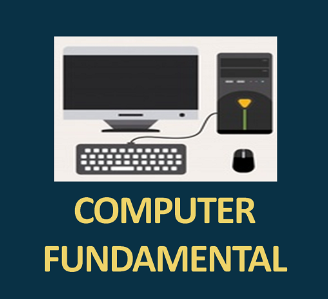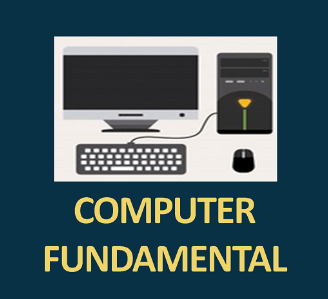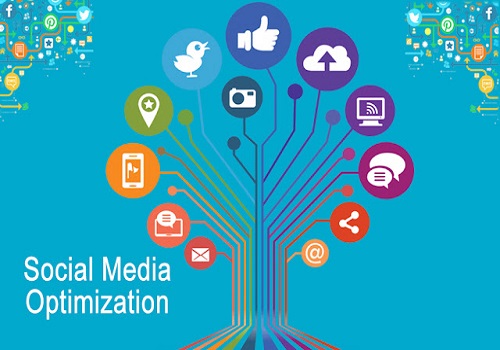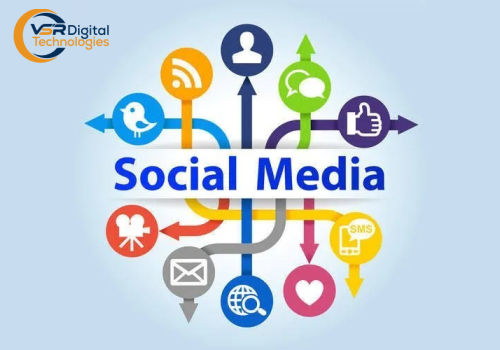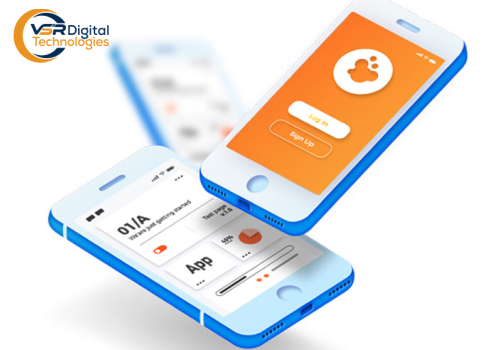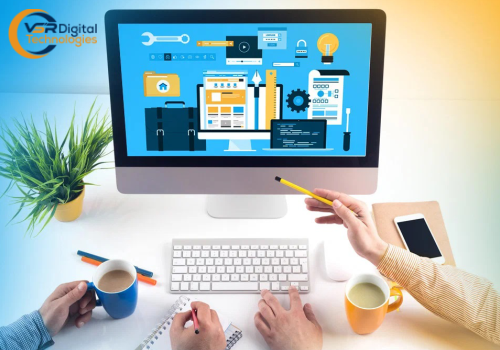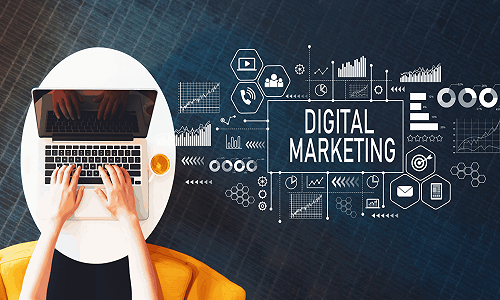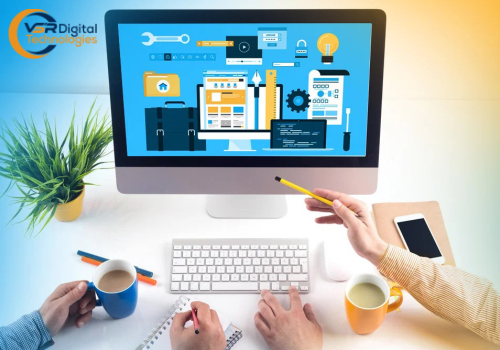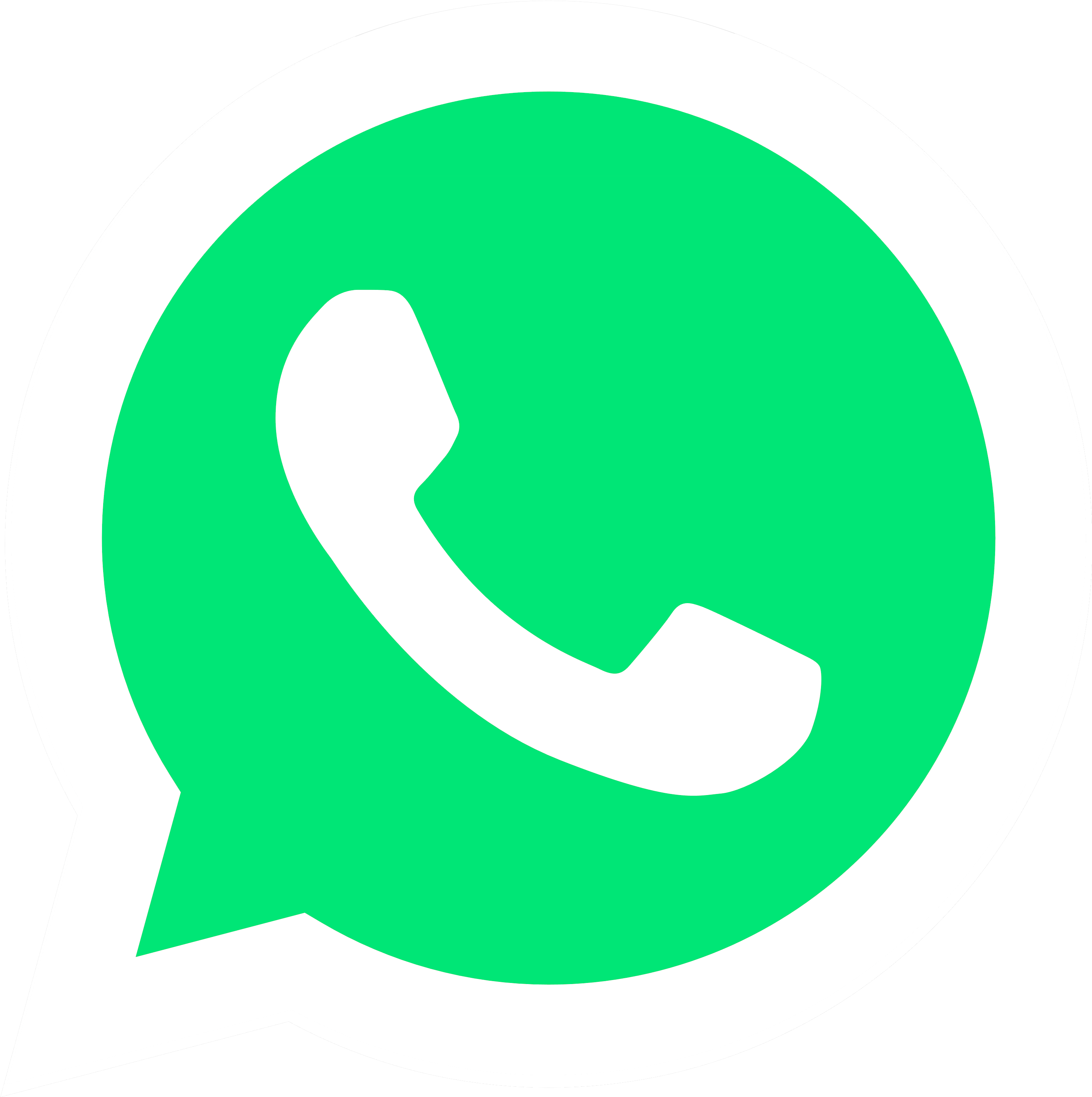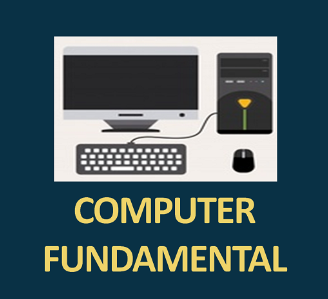
History of Computer | VSR Digital Technologies
The importance of computer is very amazing in our life, similarly it is important for us to know its history, and you can get information about many questions related to the history of computer.
Like who built the computer? How was it born and who was the father of computer? Did people play games; listen to songs or type letters etc. on the computer before?
It was not an easy task to do the calculations that were done by humans in earlier times. Larger calculations took longer and were not as accurate.
Then to solve this problem man created a calculable machine, which we call computer today.
The first computer was named ABACUS. It is a mechanical device. It was invented in 2400 BC. Done by a Chinese. Abacus has a wooden frame,
In this, beads are inserted in the metal rod and it is used for calculation by some rules. Before the abacus, the only way people had for mathematical calculations was to use their fingers and toes and stones.
Full form of abacus
ABACUS – Abundant Beads, Addition and Calculation Utility System
Its full name in Hindi is Pearls of Abundance, Addition and Counting Utility System. It performs calculations like addition, multiplication, subtraction, division, square root and cube root etc. Centuries ago it was used in Europe, China and Russia. Then later it was used in the Hindu-Arabic numeral system. Even today abacus is being used as a counting device.
Children are taught to count from it.Napier’s bone
Napier's bone is a calculable device hands are used to walk it. It was administered by John Napier of Merchiston in 1550–1617.
This calculating device was designed from metal rod, wood and ivory. Hence it was named Napier Bone. It was used for algorithm and this machine was the first machine in computer history to use decimal point.
Pascaline
In the early 17th century mathematician-philosopher Blaise Pascal invented a mechanical calculator between 1942–1944.
Which was named Pascaline and it is also called arithmetic machine or Pascal's calculator. This is a mechanical and automatic calculator, he invented it to help his father. Because his father was a tax accountant in Rouen. This machine was used to add and subtract two numbers directly and to multiply and divide through repeated addition or subtraction.
Stepped Reckoner
It was invented around 1672 and completed in 1694. The Stepped reckoner or Leibniz calculator was a digital mechanical calculator.
Which was created by the German mathematician Gottfried Wilhelm Leibniz. It was invented to improve the Pascal calculator. It was the first calculator that could perform all four arithmetic operations.
Difference engine
Charles Babbage invented the Difference engine from the beginning of History of Computer in 1820, which was completed by 1822. Difference engine is a mechanical computer which is run by steam.
It was capable of computing and hard copying multiple sets of numbers. But due to lack of money, Charles Babbage could not complete the machine. The British government helped to complete this machine because it knew that this machine was a time consuming and expensive machine.
He hoped that the difference engine would make the job more economical.
Who is the father of Computer?
Charles Babbage is called the father of computer. He was an English polymath, mathematician, philosopher, inventor and mechanical engineer.
Babbage envisioned a digital programmable computer. He invented the first modern computer "Analytical Engine" in 1837 after the Difference Engine.
The Analytical Engine had basic flow control, integrated memory and ALU (arithmetic logical unit). Sometimes due to lack of money, this computer was not made. Unfortunately Charles Babbage did not complete the invention in his lifetime,
But his great ideas and concepts towards computers were very firm. That's why he was made the father of computer. Babbage's younger son, Henry Babbage, completed a portion of the machine in 1910 and then made it capable of performing basic calculations.
In 1991, Charles Babbage was included in the Science Museum of London, during which he completed the work of the machine and built the Analytical Engine 2.
Tabulating machine
Tabulating machine is also called Hollerith Tabulating machine, Because it was created in 1890 by Herman Hollerith an American statistician.
It was electromagnetically machined. In this the data was stored in punch cards and the data was electronically sorted and counted. The tabulating machine was used to conduct the US census in 1890, which was successful. Then Herman Hollerith established the tabulating machine company, which was later named IBM (International Business Machine). From here the IBM company started in the history of computer. Which is one of the most famous and successful computer company in the world today. It is also known as Big Blue.
Differential Analyzer
It was the first modern analog computer. The differential analyzer was invented in 1930 by an engineer named Vinegar Bush at the Massachusetts Institute of Technology (MIT).
It could be used to solve some classes of differential equations, a difficult problem used in physics and engineering. To calculate in this machine, electric signals were switched by vacuum tubes. It could do more than 20 calculations in a few minutes.
Mark 1 Computer
This computer brought a major change in the history of computer, when the first programmable digital computer was created.
In November 1937, Professor Howard Aiken of Harvard University planned to develop this machine. The Mark 1 computer was created in 1944 by a partnership between IBM and Harvard. It was considered the first fully functional computer.
It has three paper-tape readers for input and output, two card readers, a punch card and Two type writers were used. Three such machines were developed by Howard Aiken over the next few years. Which were named Mark 2, Mark 3 and Mark 4.
Aiken was also credited with developing the first fully automatic large-scale calculator.
What is the name of the first computer you learned from History of computer by us, How the computer was born and who contributed to the making of the computer, Who is the father of computer and how was punch card made?
You will learn in detail about the progress of computer in History of Computer generation. Which is known as generations of computers. This journey of computer starts with vacuum tube and continues till the present day and beyond. Will continue with Artificial Intelligence as well.
At present, the development of computer technology is happening very fast. Advances in computers have made it easier to solve complex problems. Today, the easier it is to work with a computer, the easier it is to take it from one place to another, because today's computers have become very small in size, but their speed and storage capacity are many times more.From the first computer Eniac (ENIAC) to today's computer, many changes were made from time to time according to the need and a new device was prepared. This sequence of computer development has been classified into five generations. Which are as follows respectively –
1. First generation (1946–1956)
2. Second generation (1956–1964)
3. Third Generation (1964–1971)
4. Fourth Generation (1971–1985)
5. Fifth Generation (1985-Present)
So friends, these are the five generations of computers. Let us now tell you in detail about all these generations.
1. First Generation of Computer
Computers from 1946 to 1956 have been taken in the first generation of computers. The first electronic computer came into existence in 1946, whose name was Electronic Numerical Integrator and Calculator (ENIAC). It was invented by J. P. Eckert and J. W. It was done by J. W. Mauchly. Vacuum tubes were used in this computer.
Thousands of vacuum tubes were used in a first generation computer, so the size of these computers was very large. These required a very large room to be placed and once placed at one place, were difficult to relocate..
The power consumption in the first generation computers was very high, due to which they used to get very hot. It was impossible to run computers of this generation without an air conditioner. If we talk about speed, then they used to work very slowly and the result given by them was also not 100% correct.Many operators were required to run the first generation computer, as well as the knowledge of the language used in the computer was necessary for the operator to run the computer. Which was a big challenge because not everyone knew the language of that generation. Let us tell you that machine language and assembly language were used in the first generation computer. In this generation, apart from Eniac, many other computers were built, whose names are as follows.
Examples of First Generation of Computer
Advantages of First Generation of Computer
(i) Vacuum tubes were mainly used in these computers.
(ii) Magnetic drums were used for storage in these computers.
(iii) Punch cards were used to keep the data safe.
(iv) Machine and assembly language were used in computers of this generation where all commands and data were given in 0 and 1.
Disadvantages of First Generation of Computer
(i) These computers were equal in size to a room.
(ii) These computers used to emit a lot of heat.
(iii) These computers worked very slowly.
(iv) These computers were very delicate and less reliable.
(v) The speed of these computers was very less as compared to the present computers.
(vi) It was absolutely necessary to use air conditioners to run the computers of this generation.
2. Second Generation of Computer
Computers from 1956 to 1964 have been taken in the second generation of computers. Transistors were used in this generation of computers which were much better than vacuum tubes. Transistor was the main component of computers of this generation. Let us tell you that the transistor was invented by William Shokley and his scientific team in 1947 in America.
The invention of transistor proved to be a boon for the second generation computer because a huge revolution came in the field of computer due to the use of transistor. Using computers in this generation has become easier than before. The size of second generation computers was reduced as compared to the first generation and their processing speed also increased. For this reason, they were used more than the first generation.
The biggest thing about second generation computers is that 1 to 2 people were sufficient to operate these computers, but still these computers were very large in size and it was not easy to take them from one place to another. Second generation computers were more reliable than the first generation and the results given by them were also correct. High level languages like Fortran, Cobol, Algol, Snobal were used in second generation computers.
Examples of Second Generation of Computer
-
IBM 7094
-
UNIVAC 1108
-
Honeywell 400
-
CDC 1604
-
CDC 3600
Advantages of Second Generation of Computer
(i) Due to the use of transistors in the second generation, the size of the computer was smaller than before.
(ii) Second generation computers were faster and more reliable.
(iii) Magnetic tape and disk were used along with punch cards to keep the data safe.
(iv) Magnetic core memory was used in place of magnetic drum to store data in the computer.
(v) In this generation computer, instead of machine language, high level language was used like FORTRAN (Formula Translation), COBOL (Conman Business).
Disadvantages of Second Generation of Computer
(i) Due to the large size of these computers, it was difficult to move them from one place to another.
(ii) Maintenance of these computers was very difficult, due to which every user could not use them.
(iii) Not everyone had the knowledge of high level programming languages to run these computers.
(iv) An air-conditioned room was required to keep these computers cool.
3. Third Generation of Computer
If we talk about the third generation computers, computers from 1964 to 1971 have been taken in this generation. With the arrival of the third generation, there was a lot of development in the field of computers. Integrated circuits (IC) were used in place of transistors in computers of this generation.
The IC (Integrated Circuit) chip was invented in 1958 by Jack Kilby, an electrical engineer at the Texas Instrument Company. The invention of IC by Jack Kilby brought a lot of changes in the computer.
With the use of integrated circuits, the size of the computer became very small and the speed of this generation computer became much faster than the previous two generations of computers. The results given by it became more reliable and their maintenance also became easier.
Due to the use of operating system in these computers, it became easy for everyone to understand the computer. Let us tell you that a high level language like Fortran was used to work in the third generation computer.
Examples of Third Generation of Computer
Advantages of Third Generation of Computer
(i) IC chips were used in place of transistors in third generation computers.
(ii) They were more reliable than the second generation.
(iii) Higher level language was used.
(iv) The process of doing work became fast.
(v) In place of first and second generation computers, the maintenance of these computers became very easy.
(vi) Operating system was used to control the computers of this generation. Starting with the use of the operating system, all the internal functions of the system became automatic.
Disadvantages of Third Generation of Computer
(i) Requirement of air conditioner environment.
(ii) These computers served only a specific purpose.
(iii) The technology required to manufacture the IC chip was complex.
4. Fourth Generation of Computer
VLSI (Very Large Scale Integrated) chip was used instead of IC chip in computers between 1971 and 1985, which is called "microprocessor". In this technology, it has become possible to integrate 30000 components on a single chip.
With the advent of VLSI, it became possible to bring the central processing unit on a single chip. Operating system based on Graphical User Interface (GUI) was used in computers of this generation, that is, it was very easy to do mathematical and logical work.
Computers got the form of microcomputers with the advent of microprocessor. The first microcomputer made by the MITS company was the ALTAIR 800. It became very easy to understand these computers, that is why these computers were called user friendly computers. Even today microprocessor computers are being used. These computers can also be connected to each other through a network. The size of these computers is very small, that means you can work by keeping this computer on a table. That's why this computer is also known as personal computer.
The first personal computer was developed by the IBM company. With the introduction of mouse in this generation, the fame of computer got a revolutionary form. Let us tell you that in the fourth generation, high level languages like C, C++, Java, Visual basic etc. were used to write programs.
Examples of Fourth Generation of Computer
Advantages of Fourth Generation of Computer
(i) VLSI chip was used in this generation computer due to which the size of the computer became very small.
(ii) Semi-conductor memory was used in place of magnetic core to keep the data safe.
(iii) In this generation, many application program software were prepared to work along with the operating system, such as wordprocessing, spreadsheet, database, etc. became easy to work with.
(iv) Due to the low cost of these computers, more usage started.
(v) These computers required very little air-conditioned environment.
Disadvantages of Fourth Generation of Computer
(i) The chances of failure of the micro processor chip were high.
(ii) With the development of the network, there is a possibility of infection.
(iii) The need for internet increased.
(iv) More memory was required due to the work like multimedia.
5. Fifth Generation of Computer
Since 1985, till today and in the future, all the computers coming in the future have been kept in the fifth generation computer. Efforts are being made to make computers of this generation intelligent by using Artificial Intelligence. So that the work of Voice Recognition and Image Control can be done at a fast pace.
In this generation computer, ULSIC (Ultra Large Scale Integrated Circuit) chip has been used as a microprocessor instead of VLSIC. With this new technology, the size and working capacity of the microprocessor has increased significantly, due to which these computers are basically being used in the fields of Accounting, Engineering, Researches, Defense etc.
Talking about the fifth generation computer software, the main software used in this generation are Windows 95, C ++, Visual Basic, Java etc.
Examples of Fifth Generation of Computer
-
Desktop
-
Laptop
-
Palmtop
-
NoteBook
-
UltraBook
-
Chromebook
-
Param (SUPER COMPUTER)
Advantages of Fifth Generation of Computer
(i) Due to the very small size of these computers, it has become very easy to take them from one place to another.
(ii) Due to less heating of these computers as compared to earlier, these computers can work together for many hours.
(iii) Computers of this generation have developed a lot in the field of multimedia such as sound, image, text, graph etc.
(iv) Due to the facility of AI (Artificial Intelligence) in these computers, they have the ability to take decisions on their own.
(v) The storage capacity of the fifth generation computer is very large.
(vi) High level language is used in this generation computer like C, C++, ASP.Net, java, python etc.
(vii) This generation mainly includes PARAM supercomputers made in India.
Disadvantages of Fifth Generation of Computer
(i) These computers make the human brain very dull and weak.

